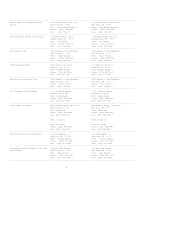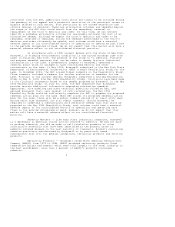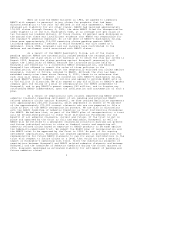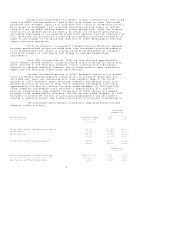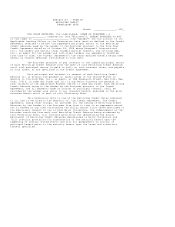Honeywell 2004 Annual Report Download - page 216
Download and view the complete annual report
Please find page 216 of the 2004 Honeywell annual report below. You can navigate through the pages in the report by either clicking on the pages listed below, or by using the keyword search tool below to find specific information within the annual report.consistent with the ACO, additional costs which are likely to be incurred during
the pendency of our appeal and a potential resolution of the principal issues in
dispute related to such matter. Such provisions do not assume excavation and
offsite removal of chromium. There are alternative outcomes and remedies beyond
the scope of the ACO that could result from the remanding, reversal or
replacement of the Court's decision and order. At this time, we can neither
identify a probable alternative outcome nor reasonably estimate the cost of an
alternative remedy. Although we expect the Court's decision and order to be
remanded, reversed or replaced, should the remedies prescribed in the Court's
decision and order ultimately be upheld, such outcome could have a material
adverse impact on our consolidated results of operations or operating cash flows
in the periods recognized or paid. We do not expect that this matter will have a
material adverse effect on our consolidated financial position.
In accordance with a 1992 consent decree with the State of New York,
Honeywell is studying environmental conditions in and around Onondaga Lake (the
Lake) in Syracuse, New York. The purpose of the study is to identify, evaluate
and propose remedial measures that can be taken to remedy historic industrial
contamination in the Lake. A predecessor company to Honeywell operated a
chemical plant which is alleged to have contributed mercury and other
contaminants to the Lake. In May 2003, Honeywell submitted to the New York State
Department of Environmental Conservation (DEC) a draft Feasibility Study for the
Lake. In November 2003, the DEC issued formal comments on the Feasibility Study.
Those comments included a request for further evaluation of remedies for the
Lake. Pursuant to the consent decree, Honeywell submitted a revised Feasibility
Study on May 3, 2004 (the May 2004 Feasibility Study). Provisions have been made
in our financial statements based on the remedy proposed by Honeywell in the May
2004 Feasibility Study. On July 30, 2004, the DEC requested that Honeywell
provide certain additional information regarding alternative remedial
approaches, site modeling and other technical questions raised by DEC, and
advised Honeywell that, upon receipt of such information, the May 2004
Feasibility Study would be sufficiently complete for DEC to prepare its proposed
remedial action plan for the Lake. When DEC issues its proposed remedial action
plan for the Lake, there will be a public comment period of at least sixty days
during which time Honeywell can also submit comments. Should Honeywell be
required to undertake a substantially more extensive remedy than that which we
proposed in the May 2004 Feasibility Study, such outcome could have a material
adverse impact on our consolidated results of operations and operating cash
flows in the periods recognized or paid. However, we do not expect that this
matter will have a material adverse effect on our consolidated financial
position.
Asbestos Matters -- Like many other industrial companies, Honeywell
is a defendant in personal injury actions related to asbestos. We did not mine
or produce asbestos, nor did we make or sell insulation products or other
construction materials that have been identified as the primary cause of
asbestos related disease in the vast majority of claimants. Products containing
asbestos previously manufactured by Honeywell or by previously owned
subsidiaries fall into two general categories; refractory products and friction
products.
Refractory Products -- Honeywell owned North American Refractories
Company (NARCO) from 1979 to 1986. NARCO produced refractory products (high
temperature bricks and cement) which were sold largely to the steel industry in
the East and Midwest. Less than 2 percent of NARCO's products contained
asbestos.
3







